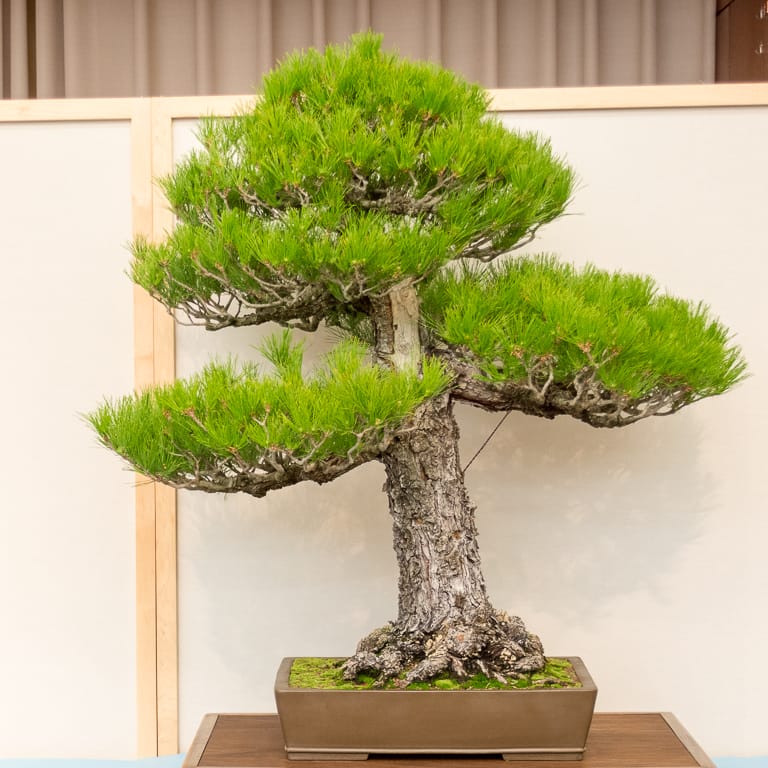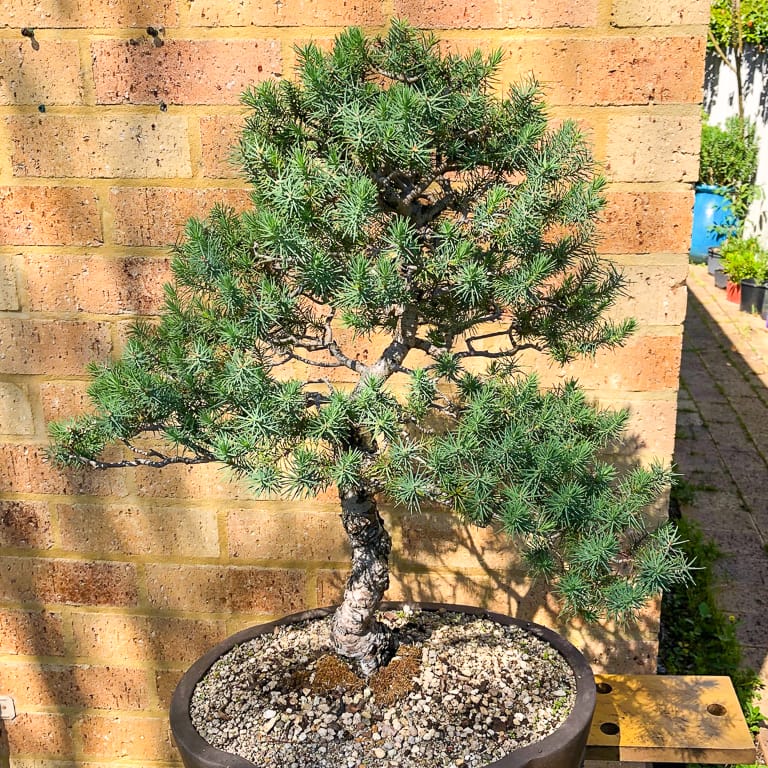Last Friday’s post resulted in fantastic feedback from readers around the world (see “What pine species can I decandle?” and the comments on this Instagram post for details). For those who contributed, thank you!
The response also made it clear that different people have different ideas about what the phrase “decandling” refers to.
I learned that decandling (known as me-kiri or “bud-cutting” in Japanese) refers to the removal of spring growth on pines with the object of stimulating adventitious buds that mature over the course of summer.
This definition works well when we’re working with black or red pines, but it brings up questions when we work with different species.

Monterey Pine at the 2018 Bay Island Bonsai exhibit
Depending on when spring growth is cut, how much spring growth is cut, and what response we expect from reducing spring growth, there is a broad variety of approaches.
In terms of when we cut, we can:
- Remove buds before they open
- Remove buds once they start to elongate
- Remove buds just before the needles emerge
- Remove spring growth after it hardens off
In terms of what we cut, we can:
- Remove all of the spring growth on the tree (full decandling)
- Remove spring growth from some branches but not others (partial decandling)
- Reduce spring shoots by cutting anywhere between 1/3 and 2/3 of the spring growth and leaving some new growth at the branch tips (to-chu-kiri in Japanese)
And in terms of what we can expect in response to the above approaches, the tree can produce:
- Adventitious buds
- Needle buds
- New shoots with juvenile foliage
- New shoots with mature foliage
Beyond the above variables, we might:
- Decandle young trees but not mature trees
- Decandle trees in warm climates but not in cool climates
- Decandle trees every year or every other year
Were I to start refining a species of pine that I haven’t worked with before, I’d want to check and see if anyone in my area has experience with it. If this isn’t an option, I’d want to reach out to other parts of the country or world and then consider the difference in climate, if any, before getting started.
If I have no starting points at all, I’d investigate how the species grows in its native environment and see if that provides any clues. Pines that grow at lower elevations with available summer water, for example, are more likely to respond well to decandling techniques than high mountain species with relatively short growing seasons.
I’d also want to try less intensive techniques before working up to more stressful approaches so I can learn how given trees respond to given techniques.
Beyond that, I’d want to think about my overall development goals. Whereas some growers aim to produce bonsai with mature foliage, others will pursue techniques that help them maintain trees with juvenile foliage.

Italian stone pine with juvenile foliage by Graham in Western Australia
A good example of a pine that can be maintained with either mature or juvenile foliage is the Aleppo pine. I’ll say more about its development in the next post.
Subscribe to Indian Bonsai Art
New Posts Delivered Every Tuesday and Friday
